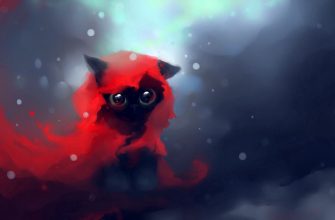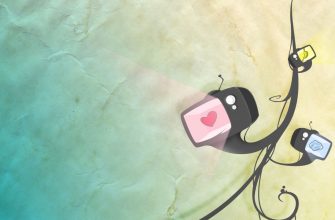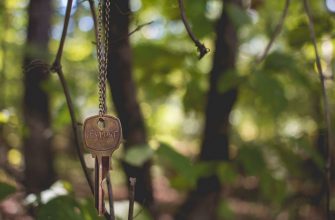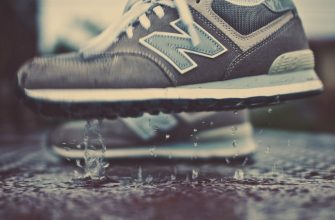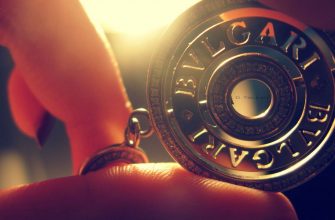Galileo Galilei
Galileo was an Italian mathematician, astronomer, and physicist. He was born in Pisa, Italy on February 15, 1564. In the mid 1570’s, he and his family moved to Florence and he started his formal education in a local monastery. He was sent to the University of Pisa in 1581. While there, he studied medicine and the philosophy of Aristotle until 1585. During these years at the university, he realized that he never really had any interest in medicine but that he had a talent for math. It was in 1585 that he convinced his father to let him leave the university and come home to Florence. Back in Florence, he spent his time as a tutor and began to doubt the Aristotle’s philosophy.
In 1589, he was made professor of mathematics at the University of Pisa where he attended school. His position also required him to teach astronomy based on Ptolemy’s theory that all planets and the sun revolved around the earth. In 1592, he left the University of Pisa and went to the University of Padua to become professor of mathematics. During his time there, he constructed a clumsy thermometer which would have work if he had taken into consideration atmospheric pressure but it still has a significance in history as being one of the first measuring instruments in science. He taught he for 18 years and during that time, became convinced that there was truth in the theory of Nicolaus Copernicus a Polish astronomer who believed that all planets including earth revolved around the sun.
While still at Padua, in 1609, he built the first astronomical telescope. When he used it to look at the sky, he easily found that most of Aristotle’s and Ptolemy’s theories were wrong. His most important discovery was when he discovered the four moons of Jupiter in 1610. Later that year Cosimo de Medici, Grand Duke of Tuscany, named Galileo his personal mathematician. This brought him back to Florence once again here he continued his studies in astronomy. Galileo also studied motion, especially that of freely falling objects. While watching swinging lamps in church one day, he noticed that it takes the same time between swings no matter how big or small the arc is. This observation led to his invention of the pendulum clock. He also discovered, before Newton, that two objects of different weights fell at the same speed. For instance, if you dropped an orange and an eggplant from the same height at the same time, they would hit the ground at the same time.
In 1613, he wrote a letter where he tried to explain how the Copernican theory was agreed with both Catholic doctrine and correct Biblical explanation. A few of his enemies got letter, and sent it to the inquisitors in Rome. What the inquisitors did, was find and discipline people who were against the teachings of the church. Galileo was brought to Rome to be tried. Fortunately for him, his charges were cleared and he was let go under one condition that was that he was not to hold or defend the Copernican theory. What this meant was that he wasn’t allowed to say it was true. Nineteen years later, in 1632, he published his first book, Dialogue Concerning the Two Chief World Systems. In this composition, he compared Aristotle’s and Ptolemy’s theories to that of Copernicus. He did this to show that the Copernican theory was more logical than the other two. Again the inquisitors tried him and this time he was found guilty. He was given to life imprison but due to his old age and poor health, he was allowed house arrest in his home just outside of Florence. He eventually went completely blind and still managed to write his second book. He died on January 8, 1642, at the age of 78. His discoveries about the timing of a pendulum swing, and that of how two objects of different weights fall at the same speed have benefited our society in more ways than are listable.
Биография Галилео Галилея на английском языке
Здесь вы можете прочитать биографию Галилео Галилея на английском языке.
Galileo Galilei was born on 15 February 1564 in Pisa, Italy. There were six children in a family of Vincenzo Galilei and Giulia Ammannati and he was the eldest. Only four children of their family survived. His father was a noted lutenist and his work was associated with music. It is known that the youngest brother of Galileo, Michelangelo, became a lutenist too. Michelangelo was enjoined by financial worries and could not help his father with dowry for their brothers-in-law, who subsequently tried to get payment due legally. Galileo sometimes lent the money to Michelangelo to help him support his musical efforts. These circumstances enhanced Galileo’s aspiration to develop inventions and earn extra income.
Galileo’s name was borrowed from his ancestor Galileo Bonaiuti who was a doctor, politician and teacher. He was born in 1370 and died in 1450. The surname of the family changed from Bonaiuti to Galilei in those years. Galileo Bonaiuti was buried in the Basilica of Santa Croce in Florence and two centuries later his noted offspring was buried in the same place.
At the age of eight Galileo’s family moved to Florence but he stayed with Jacopo Borghini for 2 years. Galileo was educated in the Camaldolese Monastery at Vallombrosa which was located near Florence.
Galileo Galilei was in a relationship with Marina Gamba and they had 3 children born out of wedlock. His eldest daughter, Virginia, was born in 1600 and the second daughter, Livia, was born in 1601. Galileo’s third child, Vincenzo, was born in 1606. Because of illegitimate birth his daughters chose the religious life. Both Livia and Virginia spent their whole life remaining at the convent of San Matteo in Arcetri. Livia’s name was changed to Sister Arcangela. Virginia changed her name to Maria Celeste. She died in 1634 and was buried in the same church with Galileo. Vincenzo became the legatee of Galileo and married.
At the age of 17 Galileo Galilei entered the University of Pisa where he studied medicine. He also was interested in mathematics, astronomy and mechanics. In 1589 he became a professor of mathematics at the University of Pisa. From 1592 to 1610 he began to teach mathematics, astronomy and mechanics at the University of Padua.
It is also known that Galileo worked on improvement of design of the telescope and invented different implements like an improved compass. He considered that theory of heliocentrism was right and most of astronomers did not agree with his opinion. As the saying goes Galileo Galilei said the famous phrase “And yet it moves” when he recanted his belief that the Earth moves around the Sun. He wrote a lot of scientific books including Two New Sciences which became his final book.
Galileo Galilei died at the age of 77 in 1642. In 1737 he was reburied and the monument was put up in his honour at the burial place. While a reburial a tooth and 3 fingers were removed from his body and one of those fingers is now reposited in the Museo Galileo in Florence.
Galileo
Our editors will review what you’ve submitted and determine whether to revise the article.
Galileo, in full Galileo Galilei, (born February 15, 1564, Pisa [Italy]—died January 8, 1642, Arcetri, near Florence), Italian natural philosopher, astronomer, and mathematician who made fundamental contributions to the sciences of motion, astronomy, and strength of materials and to the development of the scientific method. His formulation of (circular) inertia, the law of falling bodies, and parabolic trajectories marked the beginning of a fundamental change in the study of motion. His insistence that the book of nature was written in the language of mathematics changed natural philosophy from a verbal, qualitative account to a mathematical one in which experimentation became a recognized method for discovering the facts of nature. Finally, his discoveries with the telescope revolutionized astronomy and paved the way for the acceptance of the Copernican heliocentric system, but his advocacy of that system eventually resulted in an Inquisition process against him.
Who was Galileo?
Galileo was a natural philosopher, astronomer, and mathematician who made fundamental contributions to the sciences of motion, astronomy, and strength of materials and to the development of the scientific method. He also made revolutionary telescopic discoveries, including the four largest moons of Jupiter.
What did Galileo invent?
Galileo invented an early type of thermometer. Although he did not invent the telescope, he made significant improvements to it that enabled astronomical observation.
What discoveries did Galileo make?
In 1610 Galileo discovered the four biggest moons of Jupiter (now called the Galilean moons) and the rings of Saturn.
Did the Roman Catholic Church execute Galileo?
For his heresy in claiming that Earth orbits the Sun, Galileo was sentenced to life imprisonment by the Roman Catholic Church in 1633. He was not tortured or executed. He served his sentence under house arrest and died at home in 1642 after an illness.
How did Galileo influence science today?
Galileo influenced scientists for decades to come, not least in his willingness to stand up to the church to defend his findings. His improvements to the telescope led to advances in the field of astronomy. Sir Isaac Newton later expanded on Galileo’s work when coming up with his own theories.
Early life and career
Galileo was born in Pisa, Tuscany, on February 15, 1564, the oldest son of Vincenzo Galilei, a musician who made important contributions to the theory and practice of music and who may have performed some experiments with Galileo in 1588–89 on the relationship between pitch and the tension of strings. The family moved to Florence in the early 1570s, where the Galilei family had lived for generations. In his middle teens Galileo attended the monastery school at Vallombrosa, near Florence, and then in 1581 matriculated at the University of Pisa, where he was to study medicine. However, he became enamoured with mathematics and decided to make the mathematical subjects and philosophy his profession, against the protests of his father. Galileo then began to prepare himself to teach Aristotelian philosophy and mathematics, and several of his lectures have survived. In 1585 Galileo left the university without having obtained a degree, and for several years he gave private lessons in the mathematical subjects in Florence and Siena. During this period he designed a new form of hydrostatic balance for weighing small quantities and wrote a short treatise, La bilancetta (“The Little Balance”), that circulated in manuscript form. He also began his studies on motion, which he pursued steadily for the next two decades.
In 1588 Galileo applied for the chair of mathematics at the University of Bologna but was unsuccessful. His reputation was, however, increasing, and later that year he was asked to deliver two lectures to the Florentine Academy, a prestigious literary group, on the arrangement of the world in Dante’s Inferno. He also found some ingenious theorems on centres of gravity (again, circulated in manuscript) that brought him recognition among mathematicians and the patronage of Guidobaldo del Monte (1545–1607), a nobleman and author of several important works on mechanics. As a result, he obtained the chair of mathematics at the University of Pisa in 1589. There, according to his first biographer, Vincenzo Viviani (1622–1703), Galileo demonstrated, by dropping bodies of different weights from the top of the famous Leaning Tower, that the speed of fall of a heavy object is not proportional to its weight, as Aristotle had claimed. The manuscript tract De motu (On Motion), finished during this period, shows that Galileo was abandoning Aristotelian notions about motion and was instead taking an Archimedean approach to the problem. But his attacks on Aristotle made him unpopular with his colleagues, and in 1592 his contract was not renewed. His patrons, however, secured him the chair of mathematics at the University of Padua, where he taught from 1592 until 1610.
Although Galileo’s salary was considerably higher there, his responsibilities as the head of the family (his father had died in 1591) meant that he was chronically pressed for money. His university salary could not cover all his expenses, and he therefore took in well-to-do boarding students whom he tutored privately in such subjects as fortification. He also sold a proportional compass, or sector, of his own devising, made by an artisan whom he employed in his house. Perhaps because of these financial problems, he did not marry, but he did have an arrangement with a Venetian woman, Marina Gamba, who bore him two daughters and a son. In the midst of his busy life he continued his research on motion, and by 1609 he had determined that the distance fallen by a body is proportional to the square of the elapsed time (the law of falling bodies) and that the trajectory of a projectile is a parabola, both conclusions that contradicted Aristotelian physics.



